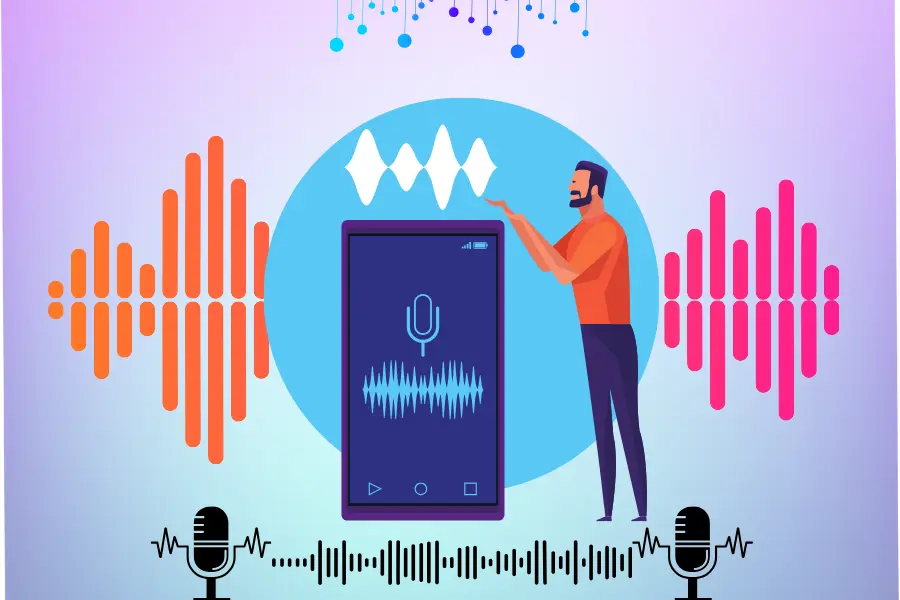Voice and Image Recognition Technologies
In today’s fast-paced digital era, voice and image recognition technologies are revolutionising how we interact with devices and access information. Google, a frontrunner in the tech industry, utilises advanced data science techniques to lead in both search and advertising. This article explores how Google employs these technologies to enhance user experiences and optimise advertising strategies.

The Evolution of Voice and Image Recognition
Voice and image recognition technologies have advanced significantly in recent years. Voice recognition enables devices to interpret and respond to spoken commands, a feature central to virtual assistants like Google Assistant. Image recognition allows systems to identify and analyse objects, people, text, and scenes in photographs. Both technologies rely on complicated machine learning algorithms and extensive datasets.
Google’s Data Science Methodology
Google’s dominance in voice and image recognition starts from its robust data science framework. This framework integrates big data, machine learning, and artificial intelligence (AI) to develop and refine these technologies continuously. Here’s a closer look at Google’s approach:
1. Extensive Data Collection
Google gathers vast amounts of data from its bundle of services, including search queries, images, and voice interactions. This data serves as the training ground for machine learning models. For instance, services like Google Photos and Google Lens utilise billions of images to train their models, enhancing their ability to accurately recognize and categorise visual content.
2. Advanced Machine Learning Algorithms
At the core of Google’s capabilities are advanced machine learning models, such as deep learning neural networks. For voice recognition, models like WaveNet and BERT (Bidirectional Encoder Representations from Transformers) significantly improve the understanding and generation of natural speech. In the realm of image recognition, convolutional neural networks (CNNs) are pivotal in interpreting visual data.
3. Continuous Improvement through User Feedback
Google’s models benefit from continuous improvement via user feedback and repetitive testing. When users interact with voice and image recognition features, their inputs help refine the algorithms. This ongoing feedback loop ensures that Google’s technologies become more accurate and reliable over time.
Transforming Search with Recognition Technologies
Voice and image recognition have transformed the way users engage with search engines. Here’s how Google integrates these technologies to enhance search functionality:
1. Voice Search
Voice search allows users to speak their queries instead of typing them, providing a more convenient and hands-free experience. Google’s voice recognition technology understands natural language, making voice searches useful and efficient. For example, users can ask, "What’s the weather like today?" and receive a spoken response with detailed weather information.
2. Image Search
Image search enables users to search using images rather than text. Google Lens, a prominent example, allows users to take photos of objects to find similar items online. This is particularly useful for identifying products, landmarks, and even translating text within images. For instance, a user can photograph a foreign language sign and get an instant translation.
Enhancing Advertising with Recognition Technologies
In the advertising realm, voice and image recognition technologies enable more targeted and engaging ad experiences. Here’s how Google applies these technologies:
1. Personalized Voice Ads
Voice recognition allows Google to deliver personalised ads through voice assistants. By understanding user preferences and context, Google Assistant can suggest relevant products or services during conversations. For example, if a user frequently asks about nearby restaurants, Google can recommend dining options and even offer special promotions.
2. Visual Shopping Ads
Image recognition enhances visual shopping ads by enabling users to shop directly from images. When users search for fashion items or home decor, Google can display ads featuring similar products available for purchase. This visual approach makes ads more appealing and directly connects users with products they are interested in.
Privacy and Ethical Considerations
While the benefits of voice and image recognition are substantial, Google places a strong emphasis on user privacy and ethical considerations. Data collected for these technologies is handled with strict privacy controls, and users have options to manage their data. Google is committed to transparency and regularly updates its privacy policies to reflect these commitments.
Google’s data science approach to voice and image recognition technologies highlights its dedication to innovation in search and advertising. By leveraging extensive data, advanced machine learning models, and continuous feedback, Google enhances user experiences and optimises advertising strategies. As these technologies evolve, Google remains at the forefront, setting industry standards and continuously adapting to meet user and advertiser needs.
The integration of voice and image recognition into daily life is not just a technological advancement but a transformation in digital interaction. Google’s strategic application of data science ensures it remains a leader in this dynamic landscape, continually enhancing how we search and engage with content online.
Active Events
Transition from Non-Data Science to Data Science Roles
Date: May 1, 2025 | 7:00 PM (IST)
7:00 PM (IST) - 8:10 PM (IST)
2753 people have registered
3 Essential Projects to Elevate Your 5c of Content Marketing Portfolio
Date: April 29, 2025 | 7:00 PM(IST)
7:00 PM(IST) - 8:10 PM(IST)
2432 people have registered
Bootcamps
Data Science Bootcamp
- Duration:8 weeks
- Start Date:October 5, 2024
Full Stack Software Development Bootcamp
- Duration:8 weeks
- Start Date:October 5, 2024
